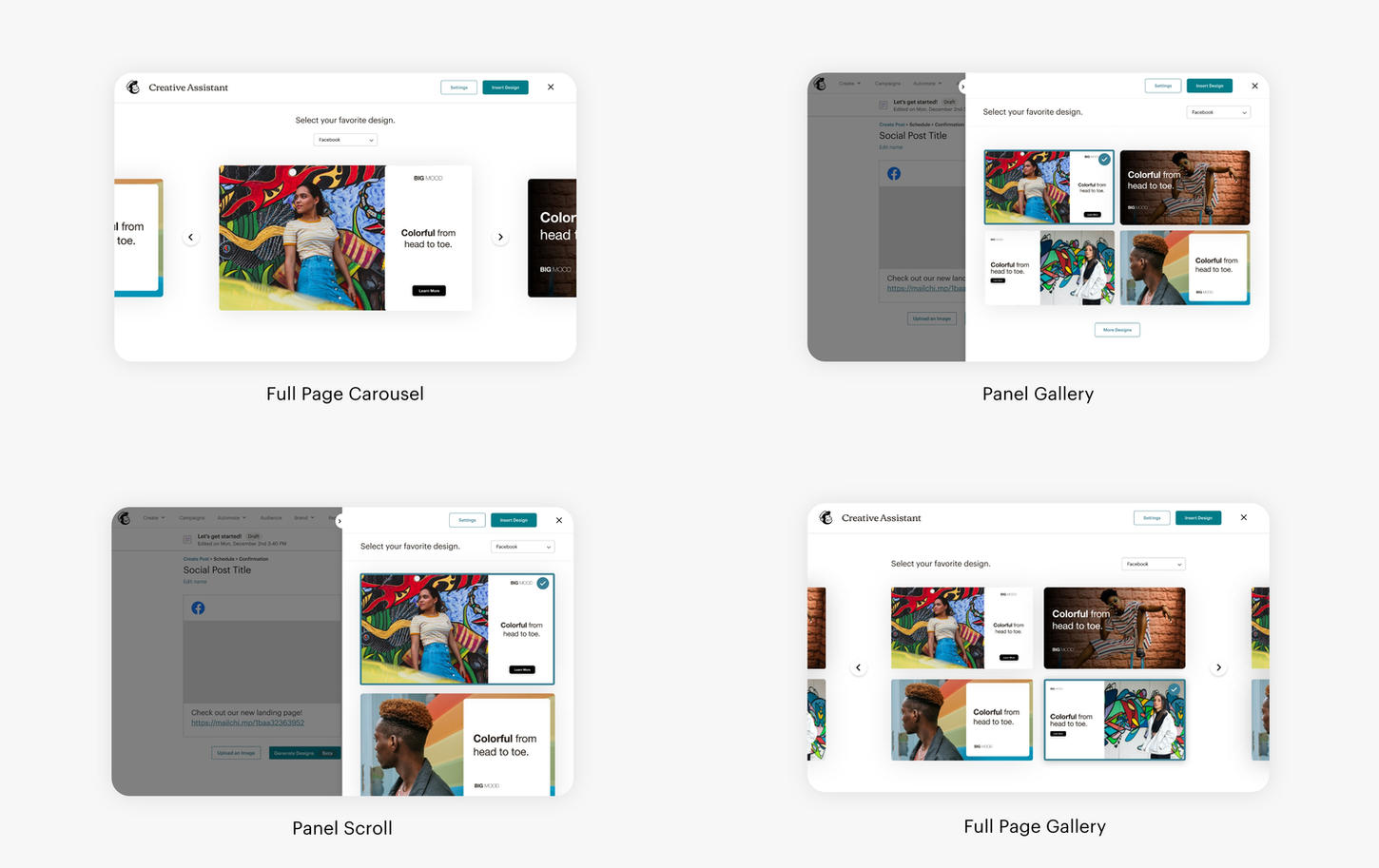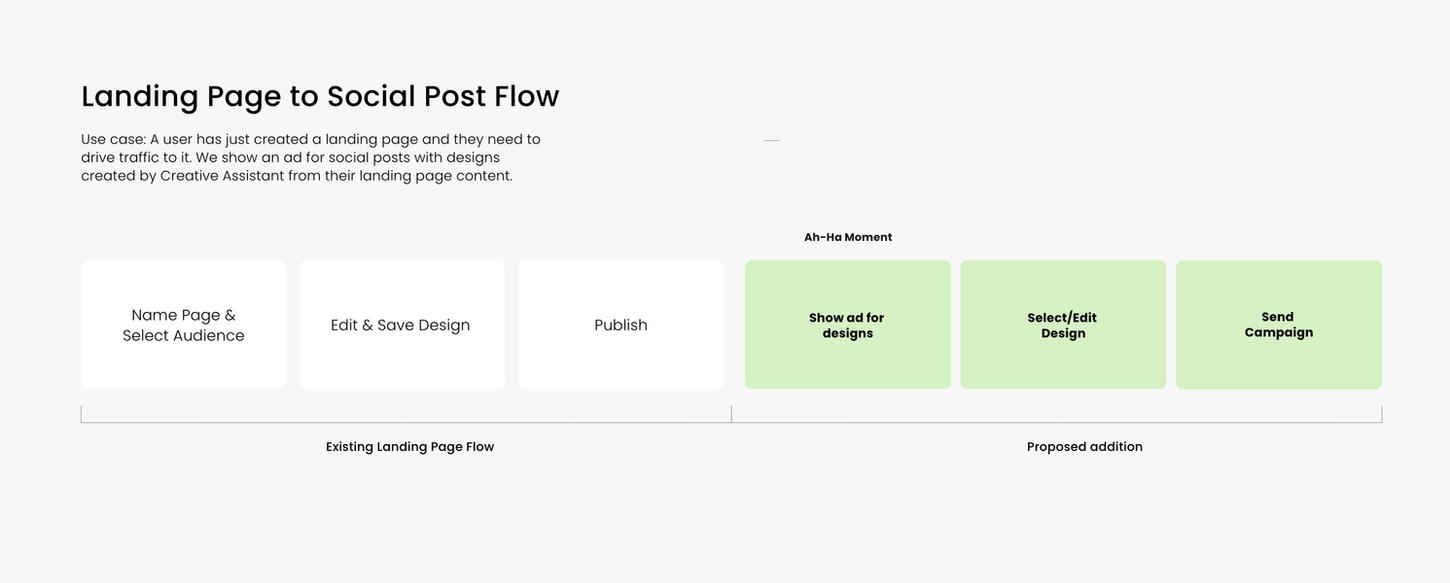top of page
The first AI-powered design tool in a major online marketing platform .
Creative Assistant gets to know your brand, then creates and resizes designs for you instantly so you can build better marketing and grow your sales. My responsibilities were designing the first integration of creative assistant into Mailchimp's platform.
Role
Product Designer
Beta Release
2020

What is Mailchimp?
All-In-One Marketing Platform for small businesses.

To start, we gathered research on our two main personas.
We engaged with Mailchimp’s research team and gathered research to utilize for creative assistant. This was a combination of existing research and new surveys to better understand issues users were facing with designs.

Users like John are solopreneurs, and don't have the bandwidth to dedicate a lot of time to create designs.
This made them a great target for creative assistant, which could automatically generate designs for them, and let them handle other work.

The problem
Users have difficulty generating content and creating designs which prevents them from sending marketing campaigns.
Exploring where Creative Assistant fits in the Mailchimp Ecosystem.
To begin design work, we looked through the marketing channels in MC to identify opportunities. Specifically, we were looking for user flows that would benefit the most from creative assistant, and areas to source content from.

Social Posts were a good integration point, because of the varying sizes and formats of designs.
One of Creative Assistants most powerful features is to resize and format designs to any channel, so this flow also made it very clear how much time the tool could save our users.

Our solution for Creative Assistant needed to be able to scale to other channels.

After initial exploration, we narrowed down to four concepts.
We were looking to get user feedback on a few variables: design selection interaction, number of designs to choose from, and a side panel vs full page overlay.

For testing, we populated each concept prototype with real customer designs, over 300 created manually.
It was important to get genuine feedback to both the general usability of the UI and the actual quality of the designs.

Test Results - Design Selection
The full-page carousel concept performed the best during testing. User's preferred being able to see one design at a time, and it made it more clear that each design was uniquely branded, and not just a template.

Next step: Helping users discover Creative Assistant.
After the design for selecting was figured out, we moved onto experimenting with how to draw users into the experience. To do this, we created a flow that would help users publish a social post after they created a landing page. Creative Assistant could utilize the user's landing page content to automatically create a social post to market their new page.

Creating a flow that could be used for not only landing page, but also email.
It was important to create a flow that was compatible with email as well, because after a successful release here, that's the next channel we would experiment with.

Ad Concepts
We created two primary ad concepts that worked on the confirmation page, a page that was the same for every publish screen in mailchimp. The ads had varying elements of copy, design size, and animation. We tested them with a group of 15 users, and populated each design with custom content to try to receive as realistic of a response as possible.


User testing quote
I would ignore these.

User testing quote
I thought these were ads, I didn't really look at the images.
The tests went poorly because we didn't account for previewing the landing page.
Once a landing page is published, the job isn't done for the user. The next step for all 15 participants was to preview their landing page, and check the status of everything. Even though they were able to preview during the edit process, it was important to them to see the live version. To adjust for this, we surfaced the ad AFTER the user returned to mailchimp from previewing their landing page.

The final flow accounted for the preview step, which improved performance.
After adjustments, and another round of testing with five users, we ultimately went with the flow below for the beta release.

Editing
Creative Assistant had some editing capabilities once designs were created. In general, the goal of the editing feature was to only be used for 'tweaks', allowing users to make slight adjustments to sizing, layout, etc..

Brand Settings
Creative Assistant doesn't just fill templates, it functions on a complex set of branding/design rules catered to a user's specific brand to generate unique designs. The ability to edit brand personality was also available in the side panel to users.

How'd it go?
14% Increase in engagement on email campaigns. And a shoutout from CEO & Founder, Ben Chestnut.

bottom of page
